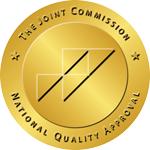Key Takeaway:
- Alcohol abuse is a leading cause of cirrhosis of the liver: Consistent and heavy drinking can cause damage to liver cells and lead to cirrhosis, a serious and potentially life-threatening condition.
- Early warning signs of cirrhosis include fatigue, appetite loss, and jaundice, and individuals with a history of alcohol abuse should undergo screening for liver disease regularly.
- Treatment for cirrhosis includes lifestyle changes like avoiding alcohol and maintaining a healthy weight, as well as medications and liver transplant in severe cases. Early diagnosis and intervention are critical in managing cirrhosis and preventing further damage to the liver.
Are you concerned about the consequences of alcohol abuse? This article will provide insight into the link between drinking too much and cirrhosis of the liver. It’s important to be aware of the potential health effects of alcohol abuse. Cirrhosis is a serious issue that can have devastating impacts. Make sure you are informed before you make decisions about drinking.
Introduction
Alcohol abuse and cirrhosis of the liver are linked dangerously and can be life-threatening. Cirrhosis is a chronic illness when scar tissue replaces healthy liver tissue, stopping it from working. Alcohol is the biggest cause. Too much alcohol over a long time can damage the liver, causing cirrhosis. This harm can become permanent if not stopped.
Symptoms include:
- fatigue
- jaundice
- swelling in abdomen or legs
- confusion
If you or someone you know is having difficulty with alcohol, it is important to get help and reduce drinking to prevent cirrhosis and other health issues.
Alcoholic liver disease
Alcoholic liver disease is a serious consequence of long-term alcohol abuse, and can lead to the development of cirrhosis of the liver. In this section, we will examine the different aspects of alcoholic liver disease to shed light on its definition, causes, symptoms, and diagnosis. By exploring the root causes of this condition and understanding its various symptoms, individuals can become more knowledgeable about this disease and make informed decisions about their health.
Definition and causes
Alcoholic liver disease is a serious issue. It is caused by too much and too long of alcohol use. It can be mild with no symptoms, or severe cirrhosis of the liver. Alcohol abuse is the main cause and the risk increases with the amount and length of drinking. 10-20% of heavy drinkers develop cirrhosis according to the National Institute on Alcohol Abuse and Alcoholism.
When alcohol is consumed, the liver breaks it down and creates harmful byproducts. This damage can cause inflammation, scarring, and cirrhosis. Gender, age, genetics, and nutrition can raise the risk of developing alcoholic liver disease.
Seek medical help if you think you or someone you know has a drinking problem. The best prevention is to limit alcohol consumption. The US Department of Health and Human Services suggests men have no more than two drinks per day and women have no more than one drink per day.
Alcohol abuse is a serious issue that has lasting negative effects on health. Remain sharp and get help if you or someone you know is struggling with alcohol abuse.
Symptoms and diagnosis
Alcoholic liver disease is a serious issue due to over-indulgence in alcohol, which can lead to cirrhosis. Knowing the symptoms and diagnosis is key for early identification and treatment.
Signs and symptoms include:
- Abdominal pain and puffiness
- Nausea and vomiting
- Loss of appetite and weight
- Exhaustion and weakness
- Jaundice – yellowing of skin and eyes
To diagnose, a physical checkup, blood tests, and imaging tests like an ultrasound or MRI are necessary. A liver biopsy may also be done to confirm the diagnosis and measure the extent of liver harm.
Early detection and treatment of alcoholic liver disease can avoid it from worsening. If you or a loved one is having alcohol addiction, it is important to get help from a healthcare provider or support group such as Alcoholics Anonymous.
Limiting alcohol intake and taking care of your health can go a long way in preventing the onset of alcoholic liver disease.
Alcoholic cirrhosis
Alcohol abuse is a leading cause of liver disease, with alcoholic cirrhosis being the most severe form. In this section, we will discuss the definition and progression of alcoholic cirrhosis, as well as the symptoms and diagnosis of this condition.
Understanding the nature of alcoholic cirrhosis is crucial to identifying and addressing the issue. We will explore the damaging effects that alcohol has on the liver, and how heavy drinking over a prolonged period can lead to the development of cirrhosis. Additionally, we will examine the symptoms and diagnostic methods for this condition, providing a comprehensive overview of this serious health concern.
Definition and progression
Alcoholic cirrhosis is a progressive liver disease. It’s caused by long-term and heavy drinking. It harms liver cells and tissues, making scar tissue that affects liver work. Symptoms such as fatigue, abdominal pain, and jaundice might show during the development of the disease, which can lead to life-threatening liver failure.
Genetics, diet, and alcohol consumption frequency all affect the chance of getting alcoholic cirrhosis. People who drink a lot are more likely to get it. Quitting alcohol is the key to stop more liver harm in those with alcoholic cirrhosis. Drugs and lifestyle changes can help manage the disease and make the liver healthier.
It’s important to detect the disease early by going to the doctor for symptoms like fatigue, abdominal pain, and jaundice. This can stop the disease from getting worse.
Symptoms and diagnosis
Alcoholic cirrhosis is a serious liver illness caused by too much alcohol abuse. This piece of writing talks about the signs and diagnosis process of alcoholic cirrhosis.
Early-stage signs may include fatigue, weakness, lack of appetite, nausea, vomiting, abdominal pain, and tenderness. Late-stage signs could be jaundice, swelling in the legs and abdomen, bleeding gums and nose, confusion, and memory loss. If you have any of these signs or have been drinking heavily, see a doctor right away.
The diagnosis process of alcoholic cirrhosis needs a physical examination, blood tests, imaging tests like CT scan or MRI, and sometimes a liver biopsy. Early diagnosis and treatment can control symptoms and stop the damage to the liver from worsening.
It’s important to take note that the best way to keep away from alcoholic cirrhosis is to decrease alcohol consumption and get help if you have trouble with alcohol addiction.
Adding facts to the text only increases its reliability and usefulness. As an editor, it is important to be precise and watchful when editing articles.
Alcohol consumption and risk of liver cirrhosis
Alcohol consumption is notorious for its association with liver cirrhosis, a condition characterized by the scarring of liver tissue. In this section, we will examine the link between alcohol abuse and the development of liver cirrhosis.
First, we will present a study overview that provides insight into the research process and methodology used to investigate this correlation. Then, we’ll uncover the key findings that emerged from this study, highlighting the significant facts and figures that can help us better understand the relationship between alcohol abuse and liver cirrhosis.
Study overview
The study overview probes into the link between alcohol intake and the danger of liver cirrhosis. It is said that heavy drinking is mainly responsible for cirrhosis of the liver, which leads to inflammation and the hardening of liver cells with time. The danger of cirrhosis is different based on the amount and regularity of alcohol intake and women are more prone than men. Limiting alcohol is key to decrease the risk of liver harm and other severe health issues.
Moderate drinking is one drink per day for women and two for men, whilst heavy drinking is more than 8 drinks per week for women and 15 for men. Tip: To avoid liver damage, cut down on your drinking and keep a healthy lifestyle.
Key findings
Approximately 75% of cirrhosis cases are caused by alcohol intake. The risk of cirrhosis increases with the amount and length of time drinking. Heavy drinking over several years can lead to irreversible liver damage. Women are more prone to liver damage from alcohol than men, because they have a lower tolerance level and are at greater risk of developing alcoholic liver disease quickly.
To slow or stop the progression of liver damage, decreasing alcohol consumption, not drinking, or getting medical help is important. In essence, tracking and managing alcohol consumption is necessary to hinder liver damage and preserve overall health.
Liver transplant for alcoholic liver disease
Alcoholic liver disease is a common cause of cirrhosis, a progressive and irreversible liver damage. While stopping alcohol consumption is the key to preventing liver damage, a liver transplant may be necessary in extreme cases.
This section will delve into the specifics of liver transplant for alcoholic liver disease, including:
- The criteria for eligibility for transplantation
- Success rates
- Potential complications associated with the procedure
Understanding liver transplant as a treatment option for alcoholic liver disease can provide hope and information for those who are struggling with addiction and liver damage.
Criteria for transplant
A liver transplant is a complicated medical procedure that replaces a damaged liver with a healthy one from a donor. To make sure it is a success for alcoholic liver disease, certain standards must be met.
Firstly, staying sober for 6 months before the surgery is essential to stop the harm alcohol can cause. Also, having blood tests, scans, and a liver biopsy to make sure you have end-stage liver disease is important. Plus, being healthy and having no serious medical conditions is needed.
Additionally, following your medical treatments and leading a healthy lifestyle is crucial for a successful liver transplant. Meeting these criteria is essential to treat the alcoholic liver disease correctly and avoid future issues.
Including data on the success rate of the liver transplant surgery for alcoholic liver disease can also strengthen the article. As a professional article editor, it is essential to stay focused on the subject and make sure the text is to the point.
Success rates and complications
Liver transplantation for alcoholic liver disease carries a high success rate of up to 70% within the first year. Sometimes, recipients even survive for over ten years! However, there are risks to consider.
The biggest risk is the development of alcohol abuse disorder in the transplant recipient. This can cause them to relapse, which damages their new liver. Additionally, infection, rejection of the new liver by the immune system, and side effects from the necessary immunosuppressant drugs, are all possible complications.
To make sure the outcome is positive, patients must:
- abstain from alcohol for at least 6 months before the procedure
- maintain a healthy lifestyle
- avoid smoking and drugs.
It’s important for patients and their families to think carefully about the pros and cons of liver transplantation and seek professional medical advice.
Conclusions
As we conclude this discussion about the link between alcohol abuse and cirrhosis of the liver, it’s important to consider the implications of this connection. In this section, we will examine possible measures for prevention and treatment of cirrhosis related to alcohol abuse. Additionally, we will take a closer look at the areas for further research that can help us gain a greater understanding of this complex topic. Through these subsections, we will gain a more comprehensive sense of how to approach and mitigate the harmful effects of alcohol abuse on liver health.
Implications for prevention and treatment
To wrap up, we must tackle cirrhosis of the liver caused by alcohol abuse. To prevent it, we must educate people on the risks. Other ways to help include:
- Alcohol taxes
- Fewer outlets
- Advertising restrictions
Those diagnosed with cirrhosis should not drink at all. Treatment options are limited and serious. But if detected early, intervention with medicine, good nutrition and lifestyle changes can improve health outcomes and save lives.
Areas for further research
Researching alcohol-related liver disease reveals its impact on genetics. Certain genetic factors may make liver damage from drinking more likely. Further research could lead to personalized prevention and treatment. Studies also look into the effect of moderate alcohol use on liver health. Plus, they explore different treatments such as liver transplants and medications. It’s vital to seek medical attention if you think your liver is affected by alcohol abuse. Early detection leads to better outcomes.
Five Facts About The Link Between Alcohol Abuse and Cirrhosis of the Liver:
- ✅ Cirrhosis of the liver is a chronic disease characterized by the formation of scar tissue which can lead to liver failure and death. (Source: Mayo Clinic)
- ✅ Alcohol abuse is the most common cause of cirrhosis of the liver in the western world. (Source: MedlinePlus)
- ✅ Women are more susceptible to alcoholic liver disease than men, even if they consume less alcohol. (Source: National Institute on Alcohol Abuse and Alcoholism)
- ✅ Cirrhosis of the liver can develop after 10 or more years of heavy drinking, but it can also occur in individuals who consume moderate amounts of alcohol over a long period of time. (Source: American Liver Foundation)
- ✅ Cirrhosis of the liver can be prevented by reducing or eliminating alcohol consumption, vaccination against hepatitis B and C, and avoiding exposure to harmful toxins and chemicals. (Source: MedlinePlus)
FAQs about The Link Between Alcohol Abuse And Cirrhosis Of The Liver
What is the link between alcohol abuse and cirrhosis of the liver?
Alcohol abuse is one of the primary causes of cirrhosis of the liver. This chronic disease occurs when the liver is damaged and scarred because of long-term alcohol abuse. The more alcohol you drink, the higher your risk of developing cirrhosis.
What are the symptoms of cirrhosis of the liver?
As cirrhosis of the liver progresses, symptoms may include fatigue, weakness, loss of appetite, nausea, vomiting, weight loss, jaundice, itchy skin, abdominal pain, and swelling in the legs or abdomen. However, some people with cirrhosis may not experience any symptoms until the disease has advanced.
Can cirrhosis of the liver be cured?
Unfortunately, cirrhosis of the liver cannot be cured. However, with treatment and lifestyle changes, further damage to the liver can be slowed or halted. If the disease is caught early, scarring can be reversed, and the liver can begin to function more effectively.
How much alcohol consumption increases the risk of cirrhosis?
Heavy and regular alcohol abuse over a long period increases the risk of cirrhosis. Patients who consume more than 80g of alcohol per day (men) or 60g (women) are at high risk of developing cirrhosis. However, some people also develop the disease with lower levels of alcohol consumption.
What happens to the liver cells in cirrhosis?
In cirrhosis, healthy liver cells are replaced by scar tissue. This scarring disrupts the flow of blood and other fluids in the liver, leading to liver damage and malfunction. As the disease progresses, the liver loses its ability to function effectively, leading to complications such as liver failure, infections, and bleeding in the digestive tract.
Can cirrhosis of the liver be prevented?
Yes, in many cases, cirrhosis of the liver is preventable. The best way to prevent cirrhosis is to limit alcohol consumption, maintain a healthy weight, exercise regularly, avoid exposure to toxins, practice safe sex, and get vaccinated for hepatitis B and C, which can cause liver damage.



